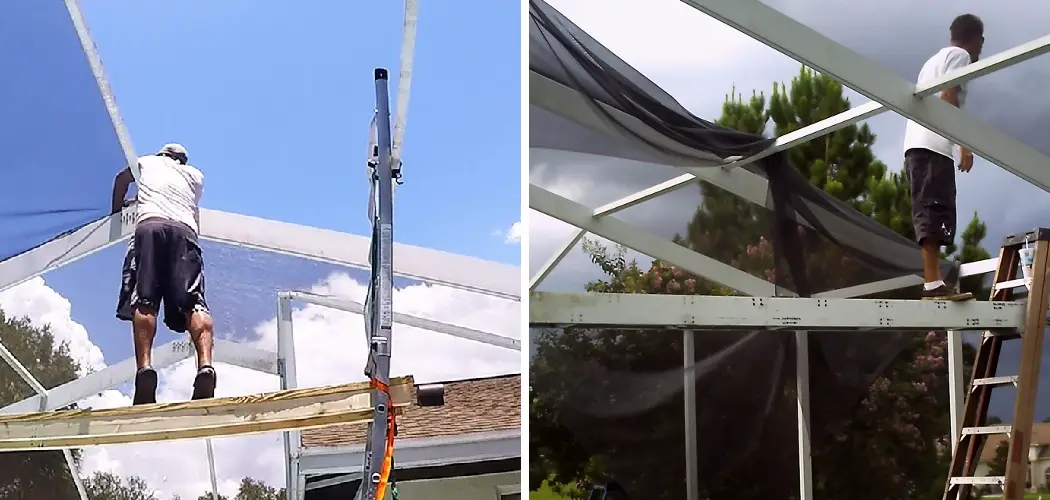Are you researching how to replace pool screen? If you’ve been in the same situation where your patio, swimming pool, or porch needs a new screen installed and you don’t know how to do it yourself, look no further!
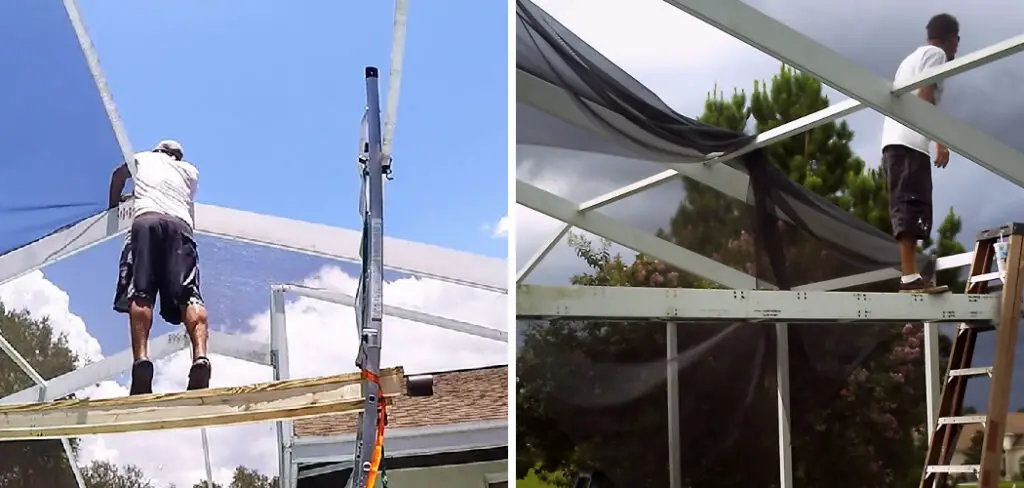
In this blog post, we will take an in-depth look at the process of replacing a pool screen. We will cover all the steps necessary for successful installation as well as tips on materials needed, tools required, and more. With these instructions, anyone should be able to transform their outdoor space with minimal effort and cost.
Tools and Materials You Will Need to Replace Pool Screen
1. Replacement pool screen material
2. Measuring tape
3. Utility knife or scissors
4. Spline roller
5. Splining tool (optional)
6. Spline pusher (optional)
7. Flat-headed screwdriver (for older screens)
8. Rubber mallet or hammer (for wooden frames)
9. Old spline removal tool (if replacing the old screen)
Step-by-step Guidelines on How to Replace Pool Screen
Step 1: Measure and Cut the Screen Material
The first step in replacing a pool screen is measuring and cutting the replacement material. Measure the length and width of your frame to determine how much screen material you will need. Add an additional 2-3 inches on each side for allowance. Once measured, use a utility knife or scissors to cut the screen material to size.
Step 2: Remove Old Screen (If Replacing)
If you are replacing an old screen, start by removing it from the frame. Use a flat-headed screwdriver to pry out the old spline and pull out the old screen material. While doing this, be careful not to damage the frame. Make sure to also remove any leftover staples or nails from the frame.
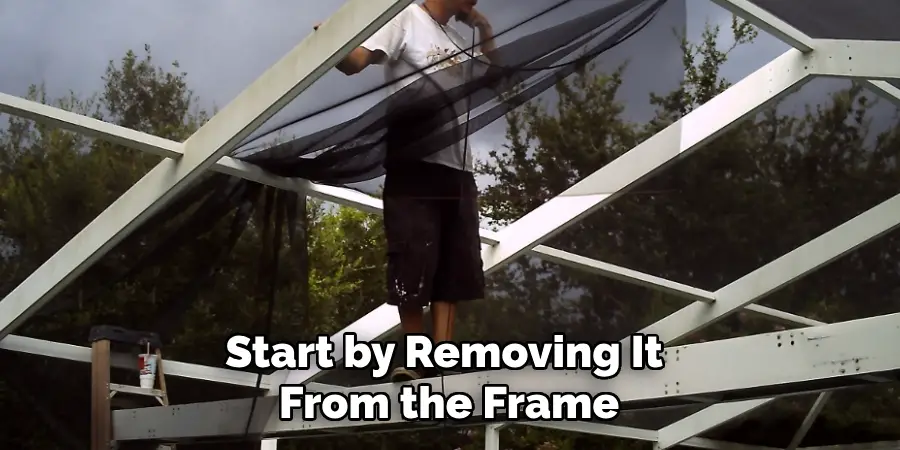
Step 3: Install New Screen Material
Once you have removed the old screen, it’s time to install the new material. Lay the cut screen material over the frame and make sure it covers all edges. Use a spline roller to insert the screen into the frame grooves on all sides. This will secure the screen in place. While installing, make sure to keep the screen tight and wrinkle-free.
Step 4: Insert Spline into Corners
To secure the corners of the screen, use a spline pusher or screwdriver to insert a small piece of spline into each corner. This will ensure that the corners are tightly secured and prevent any sagging. If you are using a spline pusher, simply insert the spline into the tool and press it into place. While using a screwdriver, gently tap the spline in with a rubber mallet or hammer.
Step 5: Trim Excess Screen Material
After you’ve secured all corners, use a utility knife to trim off any excess screen material. Be careful not to cut too close to the frame as this may cause tearing and damage. This step will give your screen a clean and finished look. If you have any rough edges, you can use a spline roller to press them in and make them smooth.
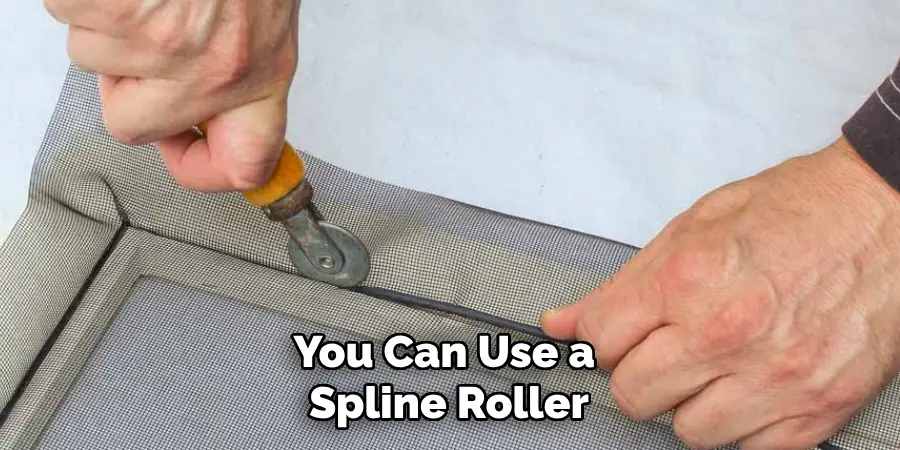
Step 6: Final Touches
Now that your new pool screen is installed, it’s time for the final touches. Use a hose or pressure washer to clean off any debris or dust from the screen surface. You can also use a mild detergent and soft brush to gently clean the screen if needed. Once cleaned, let the screen dry completely before using it.
Following these step-by-step guidelines, you should now have a new pool screen that is securely installed and ready to use. Remember to always take proper safety precautions while working with tools and materials.
With the right tools and a little bit of patience, you can easily replace your old pool screen and transform your outdoor space into a beautiful and functional area. Now go ahead and enjoy those sunny days by the pool without any worries about pesky bugs or debris! So, this was all about how to replace the pool screen. We hope this guide was helpful and informative. Happy screening!
Additional Tips and Tricks to Replace Pool Screen
- If you are replacing the pool screen on your own, make sure to measure accurately before purchasing new materials. It is advisable to purchase a little extra material in case of any mistakes or mishaps.
- Remove all debris and old material from the pool enclosure before starting the replacement process. This will ensure a clean and smooth surface for installation.
- When cutting the new screen material, always use sharp scissors or a utility knife for clean and precise cuts. This will prevent any fraying or jagged edges.
- Consider using a screen roller tool to help secure the new screen material into the frame. This can make the process easier and more efficient.
- If you encounter any tears or holes in the old screen frame, use patch kits specifically designed for pool screens. This will help maintain the integrity of the screen and prevent any future damage.
- When reattaching the screen frame to the enclosure, make sure all screws and bolts are tightened securely to ensure a secure fit.
- It is recommended to replace all old spline (the rubber material that holds the screen in place) when replacing the pool screen. This will ensure a tight and secure fit for the new screen.
- Regular maintenance of your pool screen, such as cleaning and removing any debris, can help extend its lifespan and prevent the need for frequent replacements.
- If you are not comfortable or confident in replacing the pool screen on your own, it is always best to consult a professional for assistance.
- Remember to always follow safety precautions, such as wearing gloves and eye protection, when working with screen materials and tools.
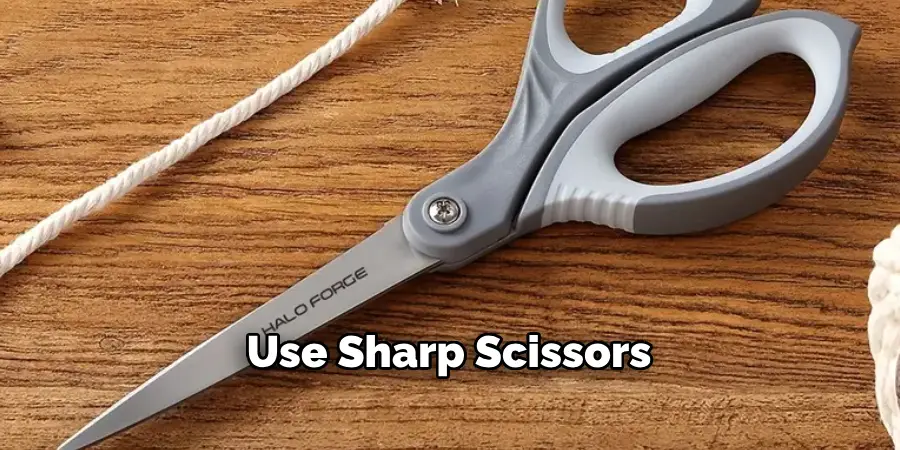
Following these additional tips and tricks can help make the process of replacing a pool screen smoother and more successful. With proper measurements, tools, and maintenance, your new pool screen should last for several years to come. Happy screening!
Things You Should Consider to Replace Pool Screen
1. First, you should consider the type of screen that needs to be replaced. There are different types of screens available in the market such as fiberglass, aluminum, and polyester. Each type has its own benefits and drawbacks, so it is important to choose one that fits your budget and needs.
2. Secondly, assess the damage to your current pool screen. If there are only a few tears or holes, you may be able to get away with just patching them up. However, if the damage is extensive and affects the structural integrity of the screen, it’s best to replace the entire thing.
3. Measure the dimensions of your pool screen before purchasing a replacement. This will ensure that you buy enough material and avoid wasting money on excess. Also, make sure to account for any additional material needed for the frame and edges.
4. Consider hiring a professional to replace your pool screen. While it may seem like a simple task, it can be time-consuming and challenging, especially if you have little experience with home repairs. A professional will also ensure that the replacement is done correctly and will last for a longer time.
5. Plan your replacement during the off-season. This is typical during winter when pool usage is low, and you won’t have to deal with any disruptions while the screen is being replaced. It can also save you money as contractors may offer discounts during slower periods.
6. Research different brands and prices before making a decision. Don’t just go for the cheapest option, as it may not be the most durable or of good quality. Look for reputable brands with good reviews to ensure you get value for your money.
7. Consider adding extra features such as UV protection or pet-resistant screens. These may cost more upfront, but they can save you money in the long run by reducing maintenance needs and extending the lifespan of your pool screen.
8. Finally, make sure to properly maintain your new pool screen. This includes regularly cleaning it, checking for any signs of damage or wear and tear, and making repairs as needed. Proper maintenance can extend the life of your pool screen and save you from having to replace it frequently.
Following these considerations can help ensure a successful and cost-effective pool screen replacement. Remember to take your time and carefully consider all options before making a decision. With the right approach, you can have a functional and beautiful pool screen that will last for many years to come.
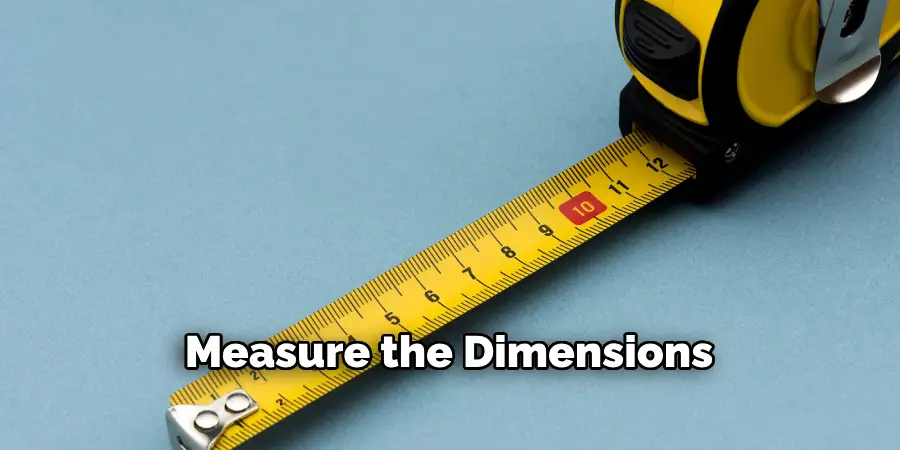
Frequently Asked Questions
What is Pool Screen Replacement?
Pool screen replacement refers to the process of replacing damaged, torn, or worn-out screens on your pool enclosure. This can involve replacing a small section of the screen or completely replacing the entire structure. It is important to regularly maintain and replace pool screens to ensure the safety and functionality of your pool area.
When Should I Consider Replacing My Pool Screen?
The frequency of when you should replace your pool screen depends on a variety of factors such as climate, amount of use, and maintenance. However, it is recommended to inspect and replace damaged screens at least once a year. Signs that you may need a pool screen replacement include tears, holes, sagging, and discoloration.
Can I Replace My Pool Screen Myself?
While it is possible to replace a pool screen yourself with the right tools and materials, it is not recommended unless you have experience with this type of project. Replacing a pool screen can be a complex and potentially dangerous task, especially if your pool enclosure is high off the ground. It is best to hire a professional for this job to ensure proper installation and safety.
How Much Does Pool Screen Replacement Cost?
The cost of pool screen replacement can vary depending on the size of your pool enclosure, type of screen material, and labor costs. On average, you can expect to pay anywhere from $500 to $1500 for a complete pool screen replacement. It is important to get quotes from multiple companies and compare prices before making a decision.
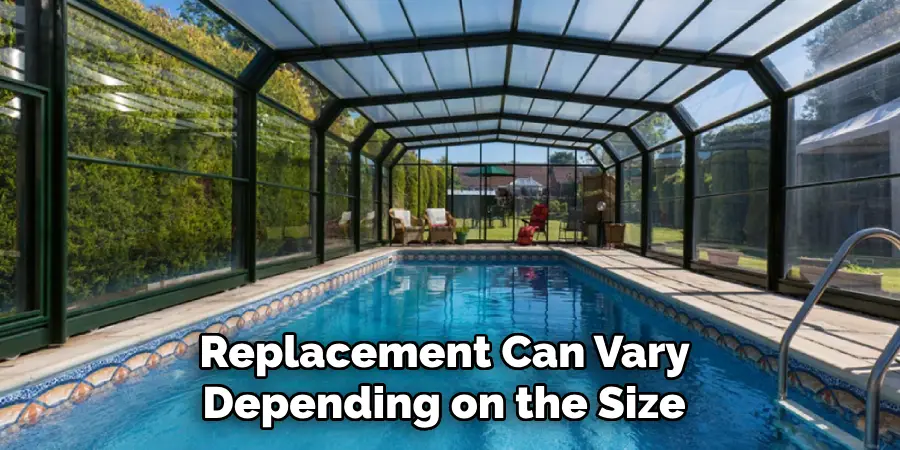
Conclusion
Knowing how to replace pool screen is an essential skill for pool owners. Regular maintenance and timely replacements can not only enhance the aesthetic appeal of your pool area but also ensure the safety of those using it.
By considering the type of screen, damage assessment, measurements, professional help, off-season timing, research, and maintenance, you can successfully replace your pool screen and enjoy a well-functioning pool enclosure for years to come. Don’t hesitate to reach out to professionals for assistance or advice if needed. Happy swimming!
About
Outdoor Fixes is a distinguished figure in the world of Diy design, with a decade of expertise creating innovative and sustainable Diy solutions.
His professional focus lies in merging traditional craftsmanship with modern manufacturing techniques,
fostering designs that are both practical and environmentally conscious. As the author of diy,
outdoorfixes delves into the art and science of outdoorfixes-making, inspiring artisans and industry professionals alike.
Education RMIT University
(Melbourne, Australia) Associate Degree in Design (Outdoor Fixes) Focus on sustainable design, industry-driven projects,
and practical craftsmanship. Gained hands-on experience with traditional and digital manufacturing tools, such as CAD and CNC software.
Nottingham Trent University
(United Kingdom) Bachelor’s in outdoorfixes.com and Product Design (Honors) Specialized in product design with a focus on blending creativity with production
techniques. Participated in industry projects, working with companies like John Lewis and Vitsoe to gain real-world insights.
Publications and Impact
In diy, Outdoor Fixes his insights on indoor design processes, materials, and strategies for efficient production.
His writing bridges the gap between artisan knowledge and modern industry needs, making it a must-read for both budding designers and seasoned professionals.

